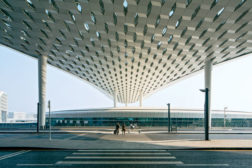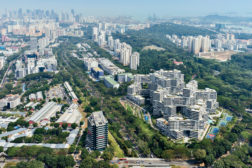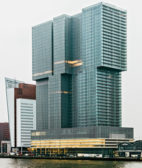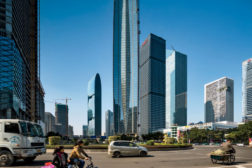Projects
Technology, demand, and daring are driving the push for big buildings.
Read More
Seona Reid Building, The Glasgow School of Art
Conversation with Mackintosh: An addition to a Scottish landmark engages the old architecture with design strategies that sometimes complement and sometimes contrast with the original building.
Read More
The Interlace
Stack the Decks: Architect Ole Scheeren hypothesized that dense urban residential living didn't have to occur in an isolating skyscraper—and he was right.
Read More
De Rotterdam
Bringing XL Back Home: Having completed huge projects in Asia, Rem Koolhaas and his Office for Metropolitan Architecture apply their strategies for building extra-large to the small city in which they are based.
Read More
Pearl River Tower
Towering Ambition: The architects and engineers behind an office building in rapidly expanding Guangzhou put super green before supertall.
Read More
Colonel James Nesmith Readiness Center
Marching Orders: THA Architects embraces a barnlike vernacular for the Colonel James Nesmith Readiness Center.
Read More
The Sunset Park Material Recovery Facility
From Trash to Treasure: The Sunset Park Material Recovery Facility, designed by Selldorf Architects, speaks volumes about the future of waste management in urban environments.
Read More
United States Consulate General, Guangzhou
Diplomatic Position: In the midst of the visual hubbub of China's third-largest city, Skidmore, Owings & Merrill creates an understated ensemble of buildings for the U.S. Consulate General.
Read More
Copyright ©2024. All Rights Reserved BNP Media.
Design, CMS, Hosting & Web Development :: ePublishing










